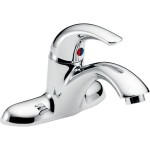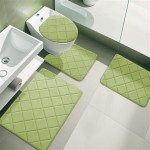Undermount Sink Vs. Drop-In Sink for Your Bathroom
Selecting the right sink for a bathroom renovation or construction project is an important decision that significantly affects both the aesthetics and functionality of the space. Two of the most popular options available are undermount sinks and drop-in sinks. While both serve the same basic purpose – providing a basin for washing – they differ considerably in their installation, appearance, and maintenance requirements. A thorough understanding of the nuances between these two sink types is essential for making an informed choice that aligns with individual needs and preferences.
This article will provide a detailed comparison of undermount and drop-in sinks, covering key aspects such as installation procedures, design considerations, cleaning and maintenance, cost implications, and suitability for various bathroom styles. By examining these factors, homeowners and contractors can gain valuable insights to guide their sink selection process and achieve the desired bathroom design.
Installation Process and Complexity
The most significant difference between undermount and drop-in sinks lies in their installation methods. This difference in installation directly impacts the labor involved, the potential for DIY projects, and the overall cost of the bathroom renovation.
Undermount Sink Installation: As the name suggests, an undermount sink is installed beneath the countertop. The sink is attached to the underside of the countertop material using clips, adhesive, or a combination of both. A precisely cut hole is required in the countertop to match the sink's shape and dimensions. This type of installation typically requires professional assistance, especially for solid surface countertops like granite, quartz, or marble. The precision cutting and securing of the sink are critical to prevent leaks and ensure structural integrity. The installation process usually involves applying silicone sealant to create a watertight seal between the sink rim and the countertop.
Drop-In Sink Installation: Also known as top-mount or self-rimming sinks, drop-in sinks are designed to be simply dropped into a pre-cut hole in the countertop. The rim of the sink sits on top of the countertop, creating a visible edge. This type of installation is generally simpler than undermount sink installation and can often be a DIY project for homeowners with basic plumbing skills. The sink is typically secured with clips or a bead of sealant to prevent movement. The visible rim of the sink covers any imperfections in the countertop cutout, making it a more forgiving option for DIYers.
The complexity of the installation process is a crucial factor to consider. Undermount sinks typically require professional installation, which increases the overall project cost. Drop-in sinks, on the other hand, offer a more DIY-friendly option that can save on labor expenses.
Aesthetic and Design Considerations
Beyond installation, the aesthetic impact of a sink on the overall bathroom design is paramount. The choice between an undermount and a drop-in sink significantly affects the visual appeal of the countertop and contributes to the overall style of the bathroom.
Undermount Sink Aesthetics: Undermount sinks provide a clean, seamless look by showcasing the countertop material. The absence of a visible rim allows the beauty of the countertop to take center stage, creating a more modern and upscale aesthetic. This design choice is particularly appealing for countertops made of expensive materials like granite or quartz, where the homeowner wants to maximize the visual impact of the surface. The clean lines and minimalist design of undermount sinks contribute to a sense of spaciousness and openness in the bathroom. They also tend to give a more custom and luxurious feel.
Drop-In Sink Aesthetics: Drop-in sinks have a more traditional or utilitarian appearance due to the visible rim that sits on top of the countertop. While some find this rim to be a design feature, others may find it less aesthetically pleasing compared to the sleek, seamless look of undermount sinks. However, drop-in sinks come in a wider variety of styles, shapes, and materials, offering more design flexibility in some cases. They can be chosen to complement various bathroom styles, from classic to contemporary. The rim can also add a decorative element, especially with sinks featuring intricate designs or unique materials.
The design aesthetic is largely a matter of personal preference. Homeowners should consider the overall style of their bathroom and the look they want to achieve when choosing between an undermount and a drop-in sink. Consider the countertop material and how the sink will complement or detract from its appearance.
Cleaning and Maintenance Requirements
The ease of cleaning and maintenance is another important factor to consider when selecting a bathroom sink. The design and installation of the sink directly affect how easily it can be cleaned and how prone it is to accumulating dirt, grime, and bacteria.
Undermount Sink Cleaning and Maintenance: Undermount sinks offer a significant advantage in terms of ease of cleaning. The seamless transition between the sink and the countertop eliminates the rim that can trap dirt and grime in the case of a drop-in sink. Wiping down the countertop directly into the sink is a simple and efficient way to clean the area, preventing the buildup of debris. Regular cleaning with a mild detergent and water is typically sufficient to maintain the cleanliness of an undermount sink. However, it is crucial to ensure the sealant around the sink remains intact to prevent water damage.
Drop-In Sink Cleaning and Maintenance: Drop-in sinks, with their visible rim, can be more challenging to clean. The area where the rim meets the countertop is prone to accumulating dirt, soap scum, and mildew. Regular scrubbing may be required to remove these deposits. The sealant around the rim can also deteriorate over time, requiring periodic replacement to prevent leaks. The design of some drop-in sinks, with intricate rims or textures, can further complicate the cleaning process.
The ease of cleaning and maintenance can significantly impact the long-term satisfaction with a bathroom sink. Homeowners who prioritize ease of cleaning may find undermount sinks to be a more convenient option. However, choosing a drop-in sink with a simple, smooth rim can mitigate some of the cleaning challenges.
Choosing the right sink also depends on other factors as well, such as what the sink is made out of or the countertop that it is installed with. For example, a porcelain or stainless steel sink can offer different cleaning requirements than a sink with a stone or glass finish. The type of countertop that the sink is installed with can also be a factor, as certain materials such as granite or marble can be more susceptible to staining, or other types of damage.
Cost Considerations
The cost of a bathroom sink encompasses not only the purchase price of the sink itself but also the installation costs, which can vary significantly between undermount and drop-in sinks. A comprehensive cost analysis is essential for budgeting purposes.
Undermount Sink Cost: Undermount sinks are generally more expensive than drop-in sinks. The higher price reflects the more complex manufacturing process and the often-superior materials used. The cost of professional installation further adds to the overall expense. Hiring a qualified plumber or contractor to install an undermount sink can significantly increase the project's budget. The countertop material also plays a role in the overall cost, as solid surface countertops require precise cutting, which may necessitate specialized equipment and expertise.
Drop-In Sink Cost: Drop-in sinks are typically more affordable than undermount sinks. The simpler design and ease of installation contribute to the lower price point. The potential for DIY installation can also save on labor costs. However, the cost of a drop-in sink can vary depending on the material, style, and features. Some high-end drop-in sinks with unique designs or premium materials can be comparable in price to lower-end undermount sinks.
The cost of the sink should be considered in conjunction with other bathroom renovation expenses, such as the countertop, faucet, and plumbing fixtures. Creating a detailed budget that accounts for all these costs is essential for making informed decisions.
Countertop Compatibility
The type of countertop chosen profoundly impacts the suitability of either an undermount or a drop-in sink. Certain countertop materials are more compatible with specific sink types due to structural integrity and aesthetic considerations.
Undermount Sink Countertop Compatibility: Undermount sinks are best suited for solid surface countertops such as granite, quartz, marble, and solid acrylic. These materials can withstand the weight of the sink and the stresses of daily use without cracking or warping. The smooth, seamless surface of these countertops complements the clean lines of an undermount sink, creating a visually appealing and functional design. Avoid laminate countertops with an undermount sink, as they are more prone to water damage and are unable to hold the weight of the sink over time.
Drop-In Sink Countertop Compatibility: Drop-in sinks are more versatile in terms of countertop compatibility. They can be used with a wider range of materials, including laminate, tile, and wood, in addition to solid surface options. The rim of the drop-in sink provides additional support and protection for the countertop, making it a suitable choice for less durable materials. When used with laminate countertops, the rim of the drop-in sink can help to prevent water from seeping into the core material, extending the lifespan of the countertop.
The countertop material should be carefully considered when choosing between an undermount and a drop-in sink. Opting for a compatible countertop material ensures both the aesthetic appeal and the long-term durability of the bathroom design.
In summary, the choice between an undermount and drop-in sink depends on a variety of factors that extend beyond simple aesthetics. The complexity of installation, long-term maintenance burden, total project budget, and the type of countertop all need to be carefully considered to ensure the best possible outcome for any bathroom renovation project. Homeowners should weigh the advantages and disadvantages of each type of sink in relation to their specific needs and preferences to make an informed decision that aligns with their overall vision for the space.

Undermount Vs Drop In Sink Which Is Best For Your Reno Bob Vila

Undermount Vs Drop In Sink Which Is Best For Your Reno Bob Vila

Undermount Vs Drop In Sinks Which Is Better The Family Handyman

Undermount Vs Drop In Sink Which To Choose 2024 Badeloft

Undermount Vs Drop In Sink Which Is The Superior Choice

Undermount Vs Drop In Sink Which To Choose 2024 Badeloft

How To Choose Your Bathroom Sink Riverbend Home

Undermount Vs Drop In Sink Which Is Best For Your Reno Bob Vila

Drop In Vs Undermount Sink Kitchen Professionals Agentis

How To Design A Low Maintenance Easy Clean Kitchen Byhyu 197







